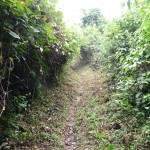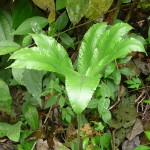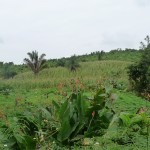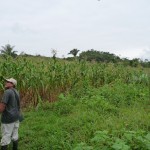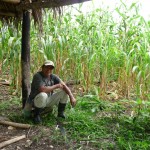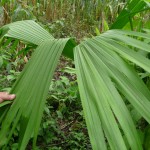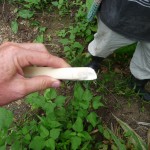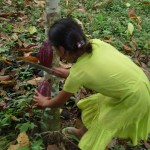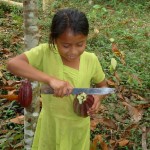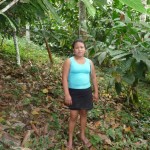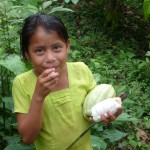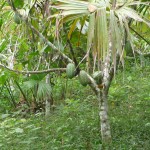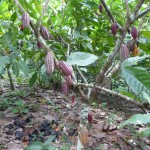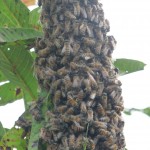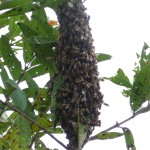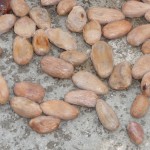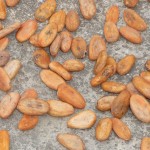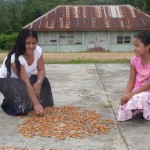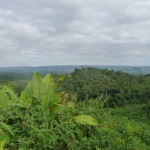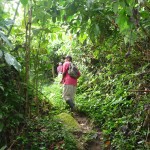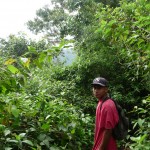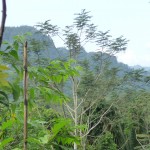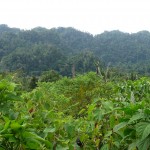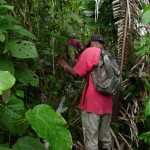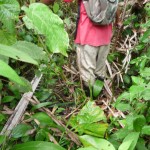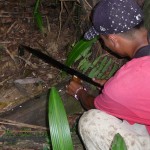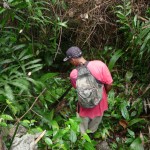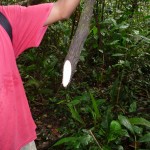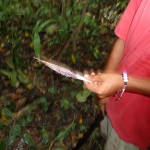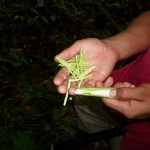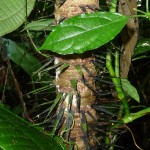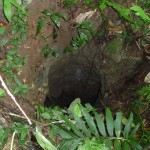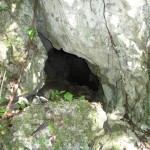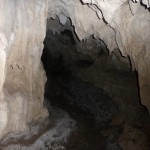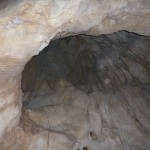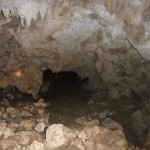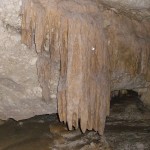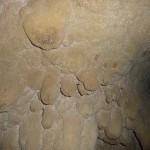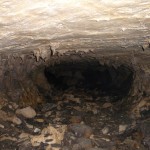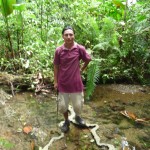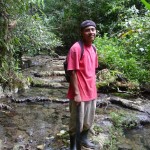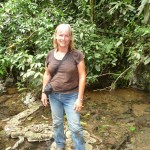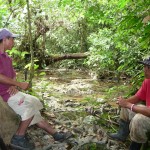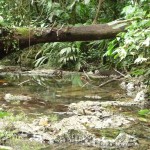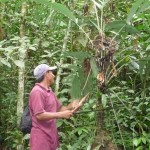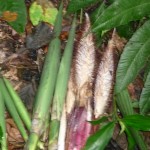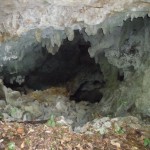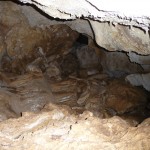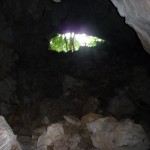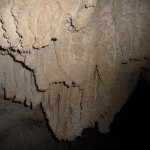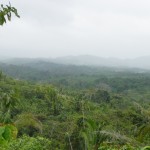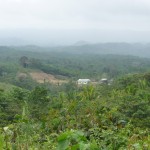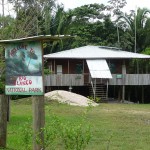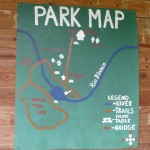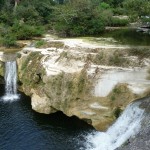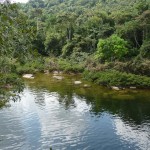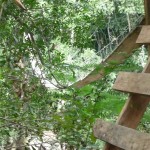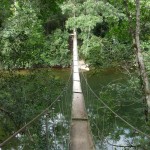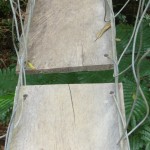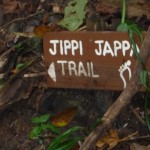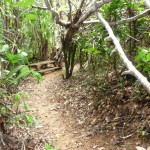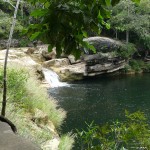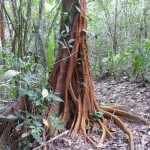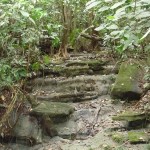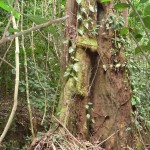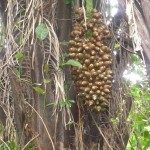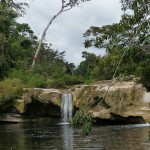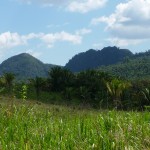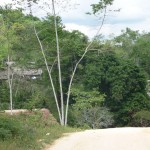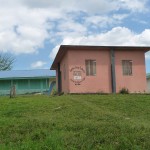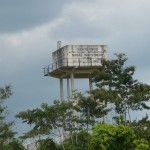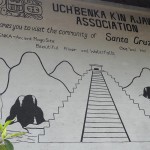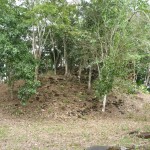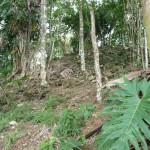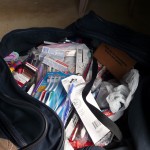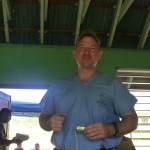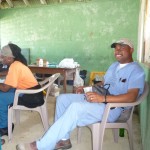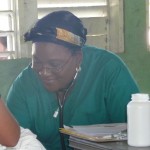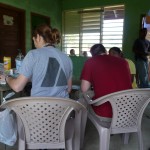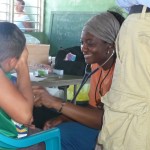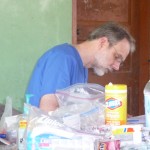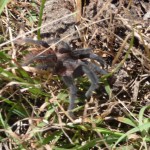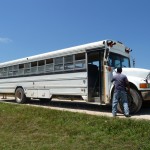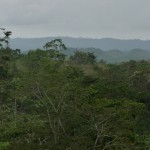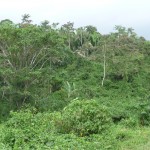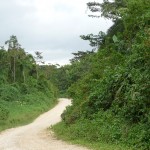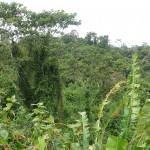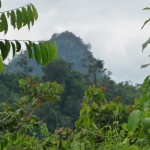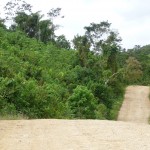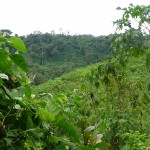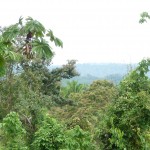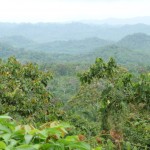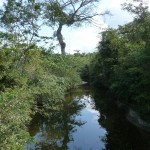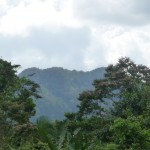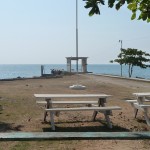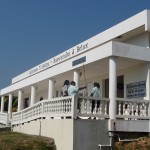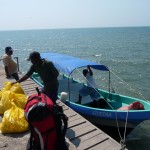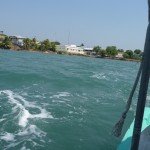During my growth-filled nine days in the tiny Mayan village of Santa Elena, I literally took hundreds of photos. While organizing them, labeling, them, and uploading them, I simply could not narrow down the list to less than these 224 photos.
The photos will be posted in two groups, due to the quantity. As usual, you can click on any photo to see a more detailed high-resolution image. What is displayed here on the page is simply a thumbnail of the photo itself.
Enjoy!
Visit to Dionicio’s Farm
This is part of the path leading to Dionicio’s farm. This part of the path is wider and closer to the village. After fifteen minutes of walking to the farm, the path continually narrows.
One of many medicinal plants that Dionicio showed to me. I don’t remember what function this particular plant fills.
Dionicio’s farm. In the foreground are his vegetables. In the background is part of a huge cornfield.
I never got close enough to the vegetables to be able to see what is actually growing.
Dionicio, studying the edges of his field of corn.
We sat and visited for a while under the shade of this thatch roof palapa that Dionicio has constructed near his corn.
The leaves of a Jippi Jappa plant — a plant used both for food and for making baskets.
The edible portion of the Jippi Jappa stalk, from the tender portion near the soil. This is a not-so-quality photo of the edible part held in my own hand. If you look closely you will see that I have already munched away for a while, eating several bites.
Cacao Farming (for making chocolate)
At Mathias’s cacao farm. In this photo, Blearny is chopping away at one of the large fruit, attempting to cut the stem on the trunk of the tree.
Blearny has successfully removed the cacao fruit, and is now trimming the end.
Quiet, shy Elaine, in the cacao farm. Not the best photo in the world, but it is the best one I have.
Munching away on the white fruit. If you look in her left hand, you can see the fruit. By now, the outer husk has been removed. Up close, the lumpy white fruit reminds me a little of brain tissue.
Another cacao tree.
And another one — this one with darker colored fruit.
As Elaine, Blearny, Rachel, and I returned to Mathias’s home, he warned the girls about a swarm of bees which had just recently landed in a tree in the yard. I found this swarm fascinating.
I included the photos here, because the bees remind me of my dream that helped free me up to take this incredible journey into my soul.
A little better focused, but further away shot of the swam as it hugs the branch of this small tree, less than thirty feet from Mathias’s front door. I felt no fear walking up close — about five feet away — because I know that normal honey bees will not bother humans unless they are provoked–especially when they are swarming.
Then I began to wonder–could these be killer bees? LOL — I really don’t know the difference.
On a different occasion, I noticed a young woman named Brenda, dumping something out onto the concrete slab near the soccer field. When I approached to find out what she was doing, I discovered that she was drying cacao seeds. These are some of the seeds that were still very moist, after having been soaking and fermenting for several days.
These cacao seeds are a little more dry, but still not totally dry. I am told that they will be dark brown, almost red, when they are dry.
Brenda, showing off her drying seeds. Brenda is the one with the white blouse. I think the other girl is Blearny, but I am spacy. I had so many faces and names running around in my head in such a short time–and then there are so many people with family resemblances that I was never sure.
I called another young woman “Brenda” one day, and Christina gently corrected me. “This is not Brenda,” she said, “but it is Brenda’s sister.”
Jungle Hike To The Caves
This is some of the beautiful scenery, as seen from the top of one hill, during my hike through the jungle.
Part of the early hike. The trail here is wide and well defined. Mateus is in the far lead, chopping vines and debris with his machete. Timoteo is second, followed by your’s truly.
Timoteo on the trail. According to Timoteo, we are still not in the real jungle. This area has been cleared and farmed–very different from the old ancient untouched wild of the real jungle.
After 40 minutes of steep walking, we reach Timoteo’s uncle’s farm.
“See that big hill over there?” he says. “That is where the caves are. We are now entering the real jungle.”
More views from the top of the same hill.
Timoteo (close) and Mateus (far), beginning to chop through the thicker underbrush. By now, it is really hard to see that there even is a trail here. I am told that this is the edge of the real jungle.
Not much of a trail at all….
Timoteo carefully chops through a hard nut that he tells me is edible. It is remarkably similar to a coconut on the inside. Notice how dark and shady it is now.
The foliage is very different out here. Timoteo continues to chop away. Mateus has disappeared in the thick brush ahead. He is carrying the brunt of the work, creating the opening through which Timoteo and I are walking.
Timoteo holding a section of very thick vine that is dripping a stream of fresh drinkable water.
Sorry, you really can’t see the water in the photo, but there was enough to satisfy a thirst. The water drains quickly once the vines have been cut.
This jungle seed pod contains edible portions. I try a few of them, and they are not bad. Glenda has asked Mateus to bring some of them home for dinner.
This is the edible portion inside of the seed pod. It tasted a little bit like raw peas–maybe not quite as moist or flavorful.
Again, notice how dark it is in this part of the jungle.
A very interesting, extremely thorny tree trunk.
As we pass this two-foot-diameter cylindrical hole in the ground, Timoteo tells me that it is extremely deep. “No one has ever been down there,” he tells me, “but it is believed to be without a bottom.”
I just take him at his word, and do not go too near.
After an hour and 45 minutes, we finally arrive at the entrance to the cave. This tiny opening (less than three feet across) leads down into the larger cave.
Inside one of the passages where I could stand up.
This is looking up toward the top of a tall narrow cavern where many bats were flying around.
Without our lights in here, it was pitch black–and I mean black.
This is the entrance to the first low passage through which we crawled. In this passage, I tried to walk on all fours, refusing to put my knees down in the muddy and rocky bottom.
After the first narrow, shallow passage. We hit a small room. It was beautiful in here, with these large stalagtites. At the bottom right, is the opening to the next passage that we crawled through. I finally gave up trying to remain clean, put my shoulder bag and sweatshirt on the ground, and crawled through the mud, making it all the way to the opening on the other end of the cave.
Half way through this passage, Mateus and Timoteo heard a noise that they thought at first could possibly be a Jaguar. We paused briefly while Mateus investigated.
Interesting formations on the wall.
Another, better view, of the passage through which we crawled. This was less than three feet tall.
We have emerged through the other end of the cave, through a tiny opening, to a little paradise. A small stream with a few terraces becomes our picnic/snack spot.
Here, Mateus finally poses for my camera, holding his extra sharp machete in his right hand.
Likewise, Timoteo poses for my camera while standing in the middle of the refreshing stream.
And then I take my turn posing, hot, tired, steaty, and dirty–but feeling very energized and happy.
Mateus (left) and Timoteo resting by the beautiful stream. A large downed tree forms a bridge a tiny way downstream.
The foliage in this part of the jungle is amazing.
A closeup of the same beautiful scenery.
After eating snacks of Maria cookies and homemade sweet bread, we crawl back into the small opening near the stream, crawling all the way back to the other side.
A bat brushes the hair on the back of my neck, and I barely break skin on my head a few seconds later as I bump into a stalactite–and then we set off on a hike to the second cave.
During our hike to the second cave, Mateus has some fun harvesting some of the edible seed pods to take home for dinner.
Some of the edible foods Mateus is taking home for Glenda to cook.
Looking down inside the entrance of the second cave. This entrance drops rapidly at about a seventy-degree angle. The bottom is over seventy five feet below. I have to coax myself before I am willing to stress my muscles even further. I am getting very tired of climbing.
One view inside the second cave.
From the bottom of the second cave, looking back up toward the opening above, with the sky beyond that.
Fun popcorn formations growing on these hanging stalactites.
A view from above as we hike back toward Santa Elena.
At last, we reach a point where we can see a portion of Santa Elena in the distance. (This photo is zoomed in from afar).
After arriving home, I take my first bath in the stream that runs through town.
Hike to Rio Blanco National Park
The homemade park sign, and the locked-up two-story park offices (I was there on Sunday). This park is about a twenty minute walk from Santa Elena, about half way to the village of Santa Cruz.
A homemade park map. I entered from the top, and followed all of the brown trails. The place where the brown crosses the blue river is where the hanging cable bridge is located.
The Rio Blanco waterfalls.
We are in dry season. I understand that in rainy season, this is one huge waterfall.
The pool of water below the falls, along with the surrounding jungle.
Clilmbing the ladder to the cable bridge platform, looking out toward the wobbly bridge.
From the platform, looking straight across the river above the small cable bridge. The sides barely reach the center of my lower hips. The footpath is made from 3/4″ thick planks with the grain running parallel to the bridge.
A close up of the bridge’s bottom construction. It does not instill a lot of faith in the weak-hearted.
The cables were stretched tightly across the river, simply attached to large tree trunks by pieces of lumber nailed into the trunks.
The trail marker, named after my favorite edible plant. Dionicio’s now-deceased son designed and built both this trail, and the cable bridge.
Hiking near the river.
The other side of the falls.
A beautiful tree along the trail.
The trail briefly runs up this stream bed.
Another beautiful tree trunk along the trail.
This cluster of nuts is edible (the insides). These are the same kind of nuts that Timoteo cut open for me on the jungle hike–the ones that look and taste a little like coconut on the inside.
A beautiful shot of the falls with the pool below and towering trees above.
Hike to the Ruins by Santa Cruz
Some of the beautiful scenery along my walk toward the village of Santa Cruz. I was headed out to check out some small Mayan ruins just past the village.
One view in the village of Santa Cruz.
The Santa Cruz library, with the school building behind.
Santa Cruz, which is about two miles east of Santa Elena, and one mile wide, has no electricity — but they do have a water system. This tall water tower stands on the easternmost hill of the city.
Directly across the road from the water tower stands this small sign, marking a tiny trail that leads to a Mayan ruin on the highest hill, just up the hill several hundred yards.
This is the shorter of the two buried pyramids — covered in dirt, shrubs, and trees. I highly suspect that this is only the tip of a pyramid, because the entire point of the hill on which I am standing seems oddly like a much larger covered pyramid itself — I may never know.
This is the taller of the two buried pyramids.
Tennessee Doctors
On Tuesday, March 9, a medical group from a small university came to visit the village. I had met Dr. Dave while walking through Santa Cruz on my way back from the pyramids on Monday. As they arrived in Santa Elena on Tuesday morning, I asked if I could help. They put me on duty to pass out toothbrushes, toothpaste, soap, and pony tail bands.
This is the large bag from which I dispensed these items.
This is Dr. Dave. He is actually a Physician’s Assistant (PA). A very fun, friendly, and outgoing guy. Without him, I probably would not have volunteered to help.
The man in the chair is a Belizean man who is their driver and escort through the backcountry. The lady in the orange shirt is another Physician’s Assistant. She was very nice also.
Another really friendly Physician’s assistant, working on a patient.
I only captured the backs of these two students who are almost finished with their education on the path to becomming Physician’s Assistants.
With a loving grin, she listens to the chest of one young boy from Santa Elena.
This is Dr. Joseph. He is the only licensed M.D. in the group. I didn’t get a chance to talk to him much, but he seems very nice.
After working for nearly five hours, the doctors packed up the bus. Dr. Dave happened to discover this little fellow while walking across the grass.
He is the first tarantula that I have seen in the wild. He is actually quite small, with his skinny body being less than two inches. His legs make him look huge.
The cream-colored bus that carries these doctors to their destinations. It actually looks more white in this photo.
Miscellaneous Scenery Around Santa Elena
One of the beautiful scenes as observed from the road while walking near the village.
A hillside just west of the village. Mathias’s cacao farm is growing underneath these tall trees.
The road winding through the countryside.
More beautiful hillsides.
A zoomed-in photo of a distant mountain. It is so sharp and pointed, I briefly wonder if it could possibly be a covered pyramid — probably not.
A typical view along the road visit here. It is constantly going up and down, winding left and right.
Another beautiful view.
And yet another.
I cannot get enough of this beautiful mountainous jungle scenery.
A tree towering above the Rio Blanco river.
One final scenery shot.
Goodbye Belize
In the distance is the pier behind the immigration building in Punta Gorda, Belize. The boats that leave for Guatemala leave from here.
This is the back side of the Belizean immigration building, facing the ocean. One could probably argue that this is the front side, since it is the side that faces traffic (boats) going to and from the country of Belize. The other side faces into the town, and is situated behind a guarded fence.
This is our boat on the small pier. My pack is on the dock in front, waiting to be loaded. I end up sitting in the right-rear seat — precisely where most of the ocean spray lands. Luckily, the boat captain gives us a large black tarp to hide behind.
As we begin to pull away from Belize, my heart is full as I turn around and wave goodbye.
